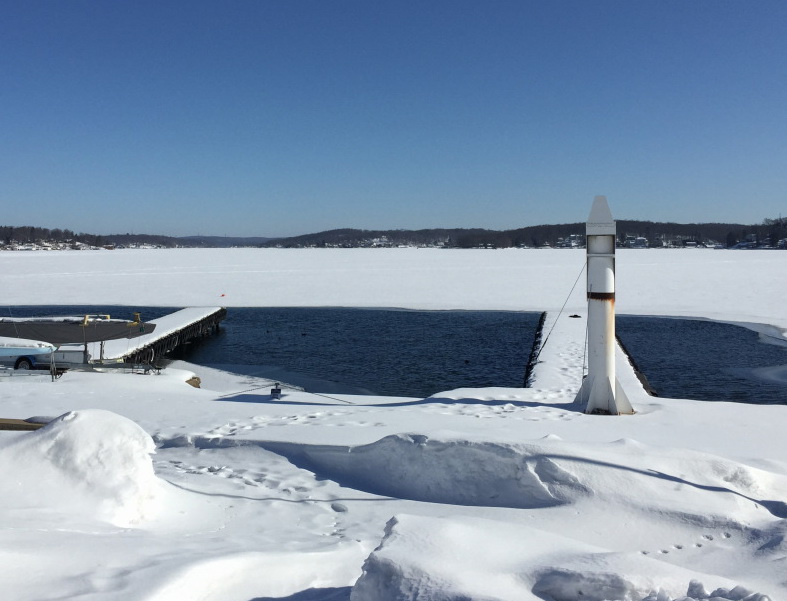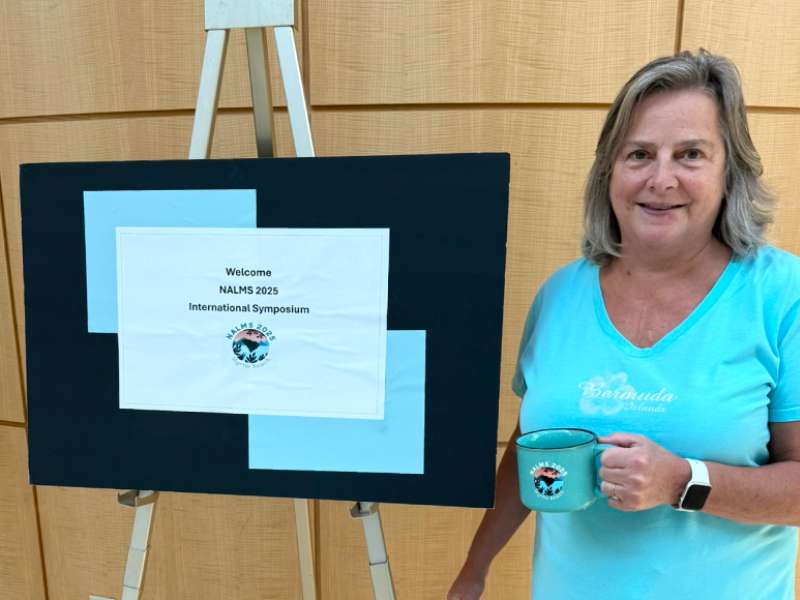
December 01, 2020| Community, Safety
By: Marty Kane
Although our winters have been trending milder and the refrain that “Lake Hopatcong does not freeze like it used to” is often heard, lakefront homeowners still need to be preparing for winter. The power of Mother Nature is remarkable and many lake residents have stories witnessing docks and even boathouses destroyed by ice. While some will find such damage hard to believe, you only need go back to the winter of 2015 to have seen 26” of ice on the lake which did not melt until early April.
While in recent years the lake has tended not to freeze until late December or into January, we can still expect six inches or more of ice during most winters. At that thickness, ice begins attaching to pilings, especially wooden ones. As the lake goes from liquid to solid it expands its mass. This expansion is slow but steady and by late winter property can be damaged by this process. As the lake rises with precipitation, dock pilings can be moved upward. As the ice continues to expand, it continues to push and pull the pilings, tilting them over or causing a roller coaster effect on a dock. Even more dangerous at Lake Hopatcong is the impact of ice flows. Much of our historical ice damage has been caused when the ice sheet melts around the lake perimeter in late winter or early spring and then is blown by strong winds towards the shoreline often destroying structures in their path.
There are two principal types of automatic systems for protecting your dock – the submersible propeller-driven system (commonly known by the brand name “Ice Eater") and the bubbler system. Propeller-driven systems work best if you have deeper water at the end of your dock (over six feet). When waters are 6 feet deep or less there is less temperature stratification in the water and even the water at the very bottom can be too cold to effectively melt surface ice. In such shallow waters, bubbler systems generally work best. This sort of system involves an air compressor on the dock, on shore, or inside a boathouse which blows air into a weighted perforated tubing that releases tiny bubbles down the length of the tubing. The long linear length of bubbles creates a constant movement of water and this steady flowing curtain of bubbles ensures that there is no ice formation along its duration.
Over the years, propeller-driven devices have become a bit controversial. When they are not monitored and controlled, they can open up huge areas of water around a dock. Such open water can cause safety hazards by making the ice unstable for great distances. It has caused many unsuspecting individuals pursuing winter sports or just walking on the ice to fall through what they thought was thick ice. It is also unwise to open up more water than is necessary from a lake management standpoint. Nature evidently intended for light to be blocked by ice and snow cover in winter. Additional light through open water impacts algae and plant growth. In an era when we battle both weeds and harmful algal blooms, maintaining as much ice as possible in winter is beneficial to the lake. Another issue is that the propeller-driven devices tend to kick sediment up from the bottom of the lake. This disturbance releases nutrients such as phosphorus from the lake bottom further exacerbating the struggle with weeds and harmful algae. Excessive phosphorus fuels weeds and algal growth. Finally, propeller-driven devices like “Ice Eaters” are noisier than bubbler systems.
While the installation of bubbler-systems can be a bit more work than just dropping in a propeller-driven system, many today are looking more favorably at bubbler-type systems. A dock bubbler, because it uses an air compressor or regenerative blower, will generally cost less in electrical consumption compared to propeller-driven devices. It is also considerably safer as it provides a controlled opening around your dock while being more environmentally friendly for the lake. And in the still of winter, it is much quieter for you and your neighbors.
Regardless of the device, you have at your house, make sure you have a thermostat and clock installed. These will save you their cost many times over by not wasting energy and opening up unnecessary swaths of the lake. There is no reason for your device to run when temperatures are above freezing. In addition, you will find a properly installed system only needs to run a few hours per day to keep your dock ice-free. And even more importantly you will be making the lake a safer place for children, ice fishermen, winter sports enthusiasts, and wildlife.
Each of the towns surrounding Lake Hopatcong has laws in place that regulate the use of ice retardant systems. It is important to be knowledgeable about your town’s rules and codes. All four town’s ordinances include the following requirements:
Hopatcong Ice Retardant Systems Ordinance / Jefferson Ice Retardant Systems Ordinance
Mt. Arlington Ice Retardant Systems Ordinance / Roxbury Ice Retardant Systems Ordinance



November 14, 2025
Community, Environment

November 13, 2025
Environment, Events

November 13, 2025
People